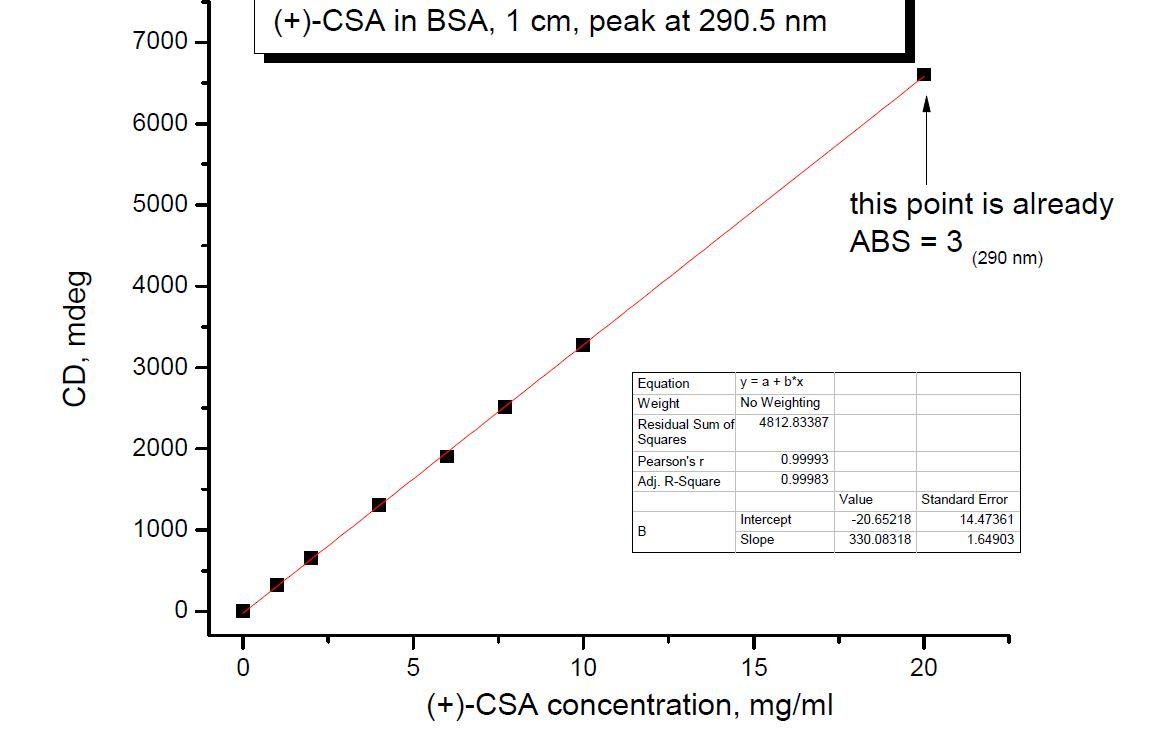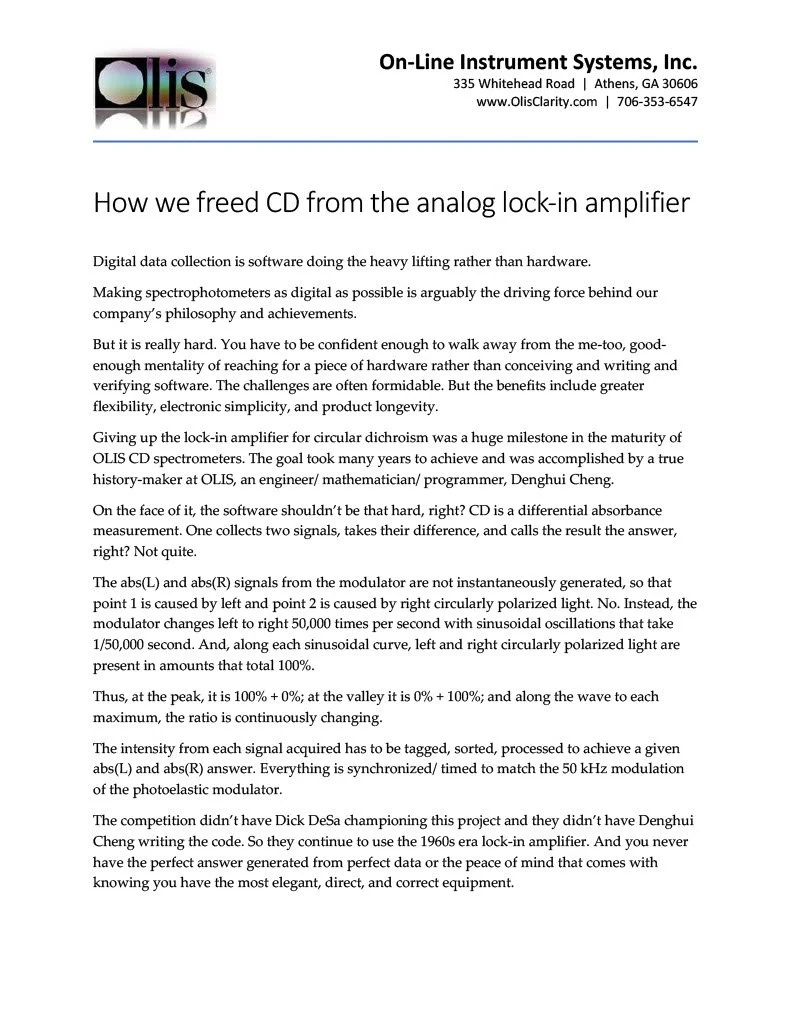
Circular Dichroism Spectrophotometers
Whether you are doing protein denaturation studies 260-190 nm or MCD 1100-2700 nm, you want the right answer. And you want it quickly, easily, perfectly.
Design advances by OLIS make these instruments as easy to use correctly as a UV/Vis spectrometer. After all: CD is abs(L) minus abs(R).
These advances simplify all instrument settings and eliminate all potential for incorrect answers.
-

OLIS DSM 20 CD
OLIS DSM 20 CD
CD and absorbance 170-700 nm
Dual-beam CD detection with pair of PMTs
Small and suitable for most teaching and research laboratories
-

OLIS DSM 1000 CD UV/Vis
Highest sensitivity DSM CD
167-540 nm
Exclusive OLIS RSM 1000 monochromator
Optional millisecond spectral scanning during ABS (not CD)
-

DSM 17 CD UV/Vis/NIR
Full scanning range of 185-1700 nm, optionally extended to 2600 nm
Useful for nearly all CD studies, including MCD Prism-grating CARY monochromator with all the outstanding performance characteristics of the original classic
-

OLIS DSM 172 UV/Vis/NIR
CD and absorbance 185-1700 nm;
extendible to 2600 nmCPL, fluorescence, and anisotropy, 230-870 nm
Polarization Toolbox sample compartment
for tool-free positioning of polarizers and PEMLED source provided for select CPL excitation
Prism-grating CARY monochromator with all the outstanding performance characteristics of the original classic
-

OLIS DSM 245
CD and absorbance 170-700 nm;
CPL, fluorescence and anisotropy 230 - 870 nm
Physically small with two OLIS monochromators, including the subtractive double grating OLIS Hummingbird
Polarization Toolbox sample compartment
for tool-free positioning of polarizers and PEM
LED source provided for select CPL excitation
-

Phosphorescence Lifetime PLT3
Direct alternative to time correlated single photon counting
Fast & flexible...collect a decay curve up to 4,000 times per second
You can purchase this as a free-standing system or purchase the hardware/ software for seamless integration of phosphorescence lifetime into a OLIS spectrophotometer, where the sample compartment and computerization come from the host instrument.
Practical Considerations when comparing “170 nm” (OLIS)
with “163 nm” (APP and Jasco):
Doing CD below 170 nm is impractical outside of a synchrotron facility. And good data below 182 nm requires a non-aqueous solvent and considerable nitrogen purging. These are physical facts having nothing to do with any given CD. All commercial CDs do extremely well in the UV or no one would buy our instruments 😊
Comparing one CD against another should focus on parameters which matter: spectral range you will use, low noise levels, ease of use, reliability, and so on. We encourage you to not be bedazzled by significant digits without merit, e.g., 0.0000001%.
Focus on values with relation to real-life situations. One of our competitors does a nice job discussing this; see How low can we go? (photophysics.com)
All commercial CDs get great data when everything is optimized, including perfect calibration and user settings. An advantage unique
to OLIS is a direct, digital data acquisition method which eliminates the variables of “perfect calibration” and “user settings.”
Our unique method (exclusive to us since the 1990s) collects abs(L) and abs(R). This allows exact and perfect collection of CD, which is, of course, abs(L)-abs(R).
The other companies are still collecting decoupled AC and DC intensities and then multiplying their ratio by the calibration constant k, i.e., k[(IAC/IDC)]”
Non-OLIS CDs
calculate the answer as
decoupled AC and DC intensities,
times a calibration constant k,
Should you care? Yes! if you want to eliminate as many routes to problems as possible. Yes! If you want the peace of mind that comes from knowing that the answer can only be correct. Yes! If you want best results with least waste.
Did you notice another attribute of the OLIS CDs? They utilize all of the light, collecting and averaging two CD scans simultaneously.
All OLIS DSM CDs
collect the answer as
CD = abs(L) - abs(R)
The “DSM” moniker was coined in the 1990s when the software was written which eliminated the need for the 1960s era lock-in amplifier that all other CD manufacturers continue to rely on.
Our brilliant breakthroughs can lead to yours! Continue…
Resources
Linearity of the OLIS DSM CDs
Numerous advantages come from the direct subtractive method (DSM) which was pioneered by Dr. Richard J. DeSa in the 1990s and made possible by the brilliant software developed by Denghui Cheng, including perfect linearity as far as you will ever need.




